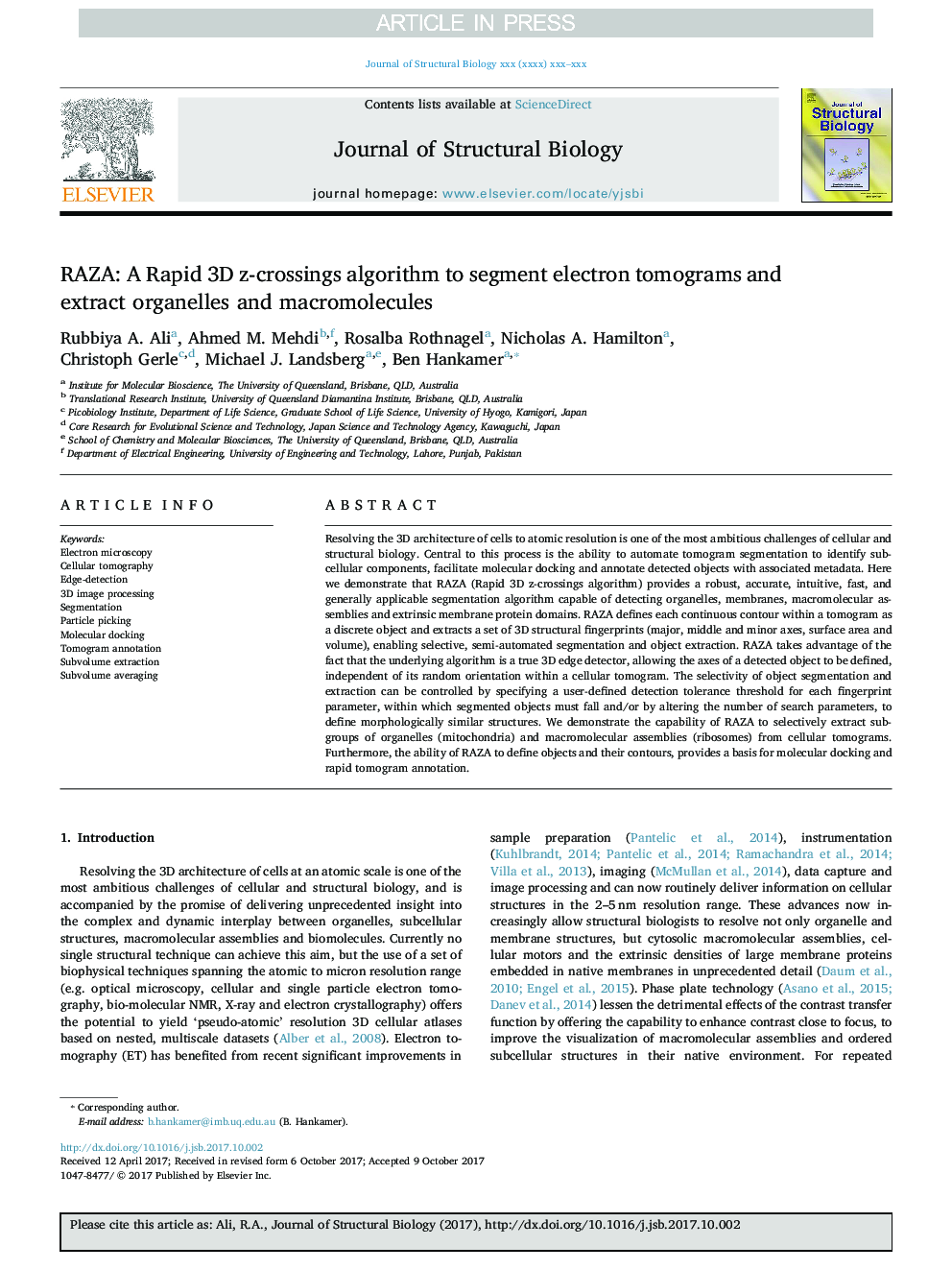| Article ID | Journal | Published Year | Pages | File Type |
|---|---|---|---|---|
| 8648305 | Journal of Structural Biology | 2017 | 14 Pages |
Abstract
Resolving the 3D architecture of cells to atomic resolution is one of the most ambitious challenges of cellular and structural biology. Central to this process is the ability to automate tomogram segmentation to identify sub-cellular components, facilitate molecular docking and annotate detected objects with associated metadata. Here we demonstrate that RAZA (Rapid 3D z-crossings algorithm) provides a robust, accurate, intuitive, fast, and generally applicable segmentation algorithm capable of detecting organelles, membranes, macromolecular assemblies and extrinsic membrane protein domains. RAZA defines each continuous contour within a tomogram as a discrete object and extracts a set of 3D structural fingerprints (major, middle and minor axes, surface area and volume), enabling selective, semi-automated segmentation and object extraction. RAZA takes advantage of the fact that the underlying algorithm is a true 3D edge detector, allowing the axes of a detected object to be defined, independent of its random orientation within a cellular tomogram. The selectivity of object segmentation and extraction can be controlled by specifying a user-defined detection tolerance threshold for each fingerprint parameter, within which segmented objects must fall and/or by altering the number of search parameters, to define morphologically similar structures. We demonstrate the capability of RAZA to selectively extract subgroups of organelles (mitochondria) and macromolecular assemblies (ribosomes) from cellular tomograms. Furthermore, the ability of RAZA to define objects and their contours, provides a basis for molecular docking and rapid tomogram annotation.
Keywords
Related Topics
Life Sciences
Biochemistry, Genetics and Molecular Biology
Molecular Biology
Authors
Rubbiya A. Ali, Ahmed M. Mehdi, Rosalba Rothnagel, Nicholas A. Hamilton, Christoph Gerle, Michael J. Landsberg, Ben Hankamer,
